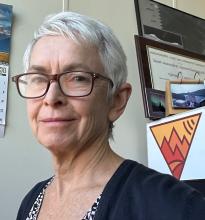
If seen from another star, Venus and Earth would appear as near twins in size, density, and distance to our sun. From a geodynamic view, their comparable concentrations of radiogenic elements imply similar heat engines to drive tectonics. Like Earth, Venus has a young, largely uncratered surface. These parallels make Venus a cosmic gift for understanding planetary evolution. Yet this planetary ‘control case’ constantly highlights fundamental gaps in our comprehension of forces that shape interior convection, surface geology, and ultimately habitability. Today, Venus is dramatically uninhabitable, with a surface temperature of 460°C and a pressure of 90 bars. Although once predicted to have plate tectonics, Venus displays no such interconnected network of plate boundaries. Instead, Venus appears more like early Earth, prior to full scale plate tectonics - but without interference from erosion or sedimentation. The intense greenhouse keeps the lithosphere hot. Large plateaus may be analogs of proto continents. There are numerous examples of possible subduction, interpreted as sinking slabs absent horizontal plate motion. Our challenges of applying Earth-centric ideas of how planets operate to our twin, along with the limited data availability, have made Venus prone to controversy. Does the deep interior retain more water than Earth or is it dry? Is the lithosphere strong or weak? Or, is temperature or water more important? Is Venus geologically active on a regional scale, or did it experience a massive geologic event that removed craters and killed most subsequent activity? What allows for a huge range of mantle plumes sizes? This talk gives a view of Venus, mostly through the lens of ‘coronae.’ These enigmatic volcano-tectonic features are (arguably!) unique to Venus, and thus may shine light on what makes the twin planets evolutionary paths distinct. The talk will also provide a preview of what to expect from future mission data.
*Refreshments: 10:30 AM - 11:00 AM (Atrium)